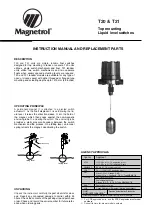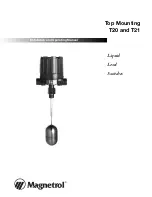
1-4
z
The configuration file name is saved in the Option 67 or file field of the DHCP response. The device
first resolves the Option 67 field; if this field contains the configuration file name, the device does
not resolve the file field; otherwise, it resolves the file field.
z
Temporary configuration contains two parts: the configuration on the interface where automatic
configuration is performed when the device starts up with default configuration; and the executed
ip host
command when the device is resolving the network intermediate file (For the detailed
description of the
ip host
command, refer to
Domain Name Resolution Commands
in the
IP
Services Volume.
). Removal of the temporary configuration is to execute the
undo
commands.
z
For the detailed introduction to DHCP, refer to
DHCP Configuration
in the
IP Services Volume.
Principles for selecting an address pool on the DHCP server
The DHCP server selects IP addresses and other network configuration parameters from an address
pool when assigning an IP address to a client. DHCP supports two mechanisms for IP address
allocation.
z
Dynamic address allocation: The DHCP server assigns an IP address and other configuration
parameters in an address pool to a client.
z
Manual address allocation: The DHCP server will select an address pool where an IP address is
statically bound to the MAC address or ID of the client and assign the statically bound IP address
and other configuration parameters to the client.
You can configure an address allocation mode as needed:
z
Different devices with the same configuration file: You can configure dynamic address allocation on
the DHCP server to assign IP addresses and the same configuration parameters (for example,
configuration file name) to the devices. If this address allocation mode is adopted, the configuration
file can only contain common configurations of the devices, and the specific configurations of each
device need to be performed in other ways. For example, you need to specify to enable Telnet on a
device through the configuration file obtained in automatic configuration and create a local user to
facilitate the administrator to Telnet to each device to perform specific configurations (for example,
configure the IP address of each interface).
z
Different devices with different configuration files: You need to configure an address pool where an
IP address is statically bound to the MAC address or ID of the client, to ensure that a specific client
can be assigned with a fixed IP address and other configuration parameters. Through this address
allocation mode, you can specify different configuration commands for each device, without the
need to configure the device through other modes.
Содержание 4500G PWR 24-Port
Страница 200: ...1 5 ProviderB GigabitEthernet1 0 2 undo stp enable ProviderB GigabitEthernet1 0 2 bpdu tunnel dot1q stp ...
Страница 252: ...1 7 Clearing ARP entries from the ARP table may cause communication failures ...
Страница 362: ...i Table of Contents 1 Dual Stack Configuration 1 1 Dual Stack Overview 1 1 Configuring Dual Stack 1 1 ...
Страница 407: ...1 8 1 1 ms 1 ms 1 ms 1 1 6 1 2 1 ms 1 ms 1 ms 1 1 4 1 3 1 ms 1 ms 1 ms 1 1 2 2 Trace complete ...
Страница 786: ...1 16 3 In the case of PIM SM use the display current configuration command to check the BSR and RP information ...
Страница 1387: ...1 23 ...
Страница 1443: ...i Table of Contents 1 URPF Configuration 1 1 URPF Overview 1 1 What is URPF 1 1 How URPF Works 1 1 Configuring URPF 1 2 ...
Страница 1720: ...ii Single Device Upgrade 3 4 IRF System Upgrade 3 5 ...




































